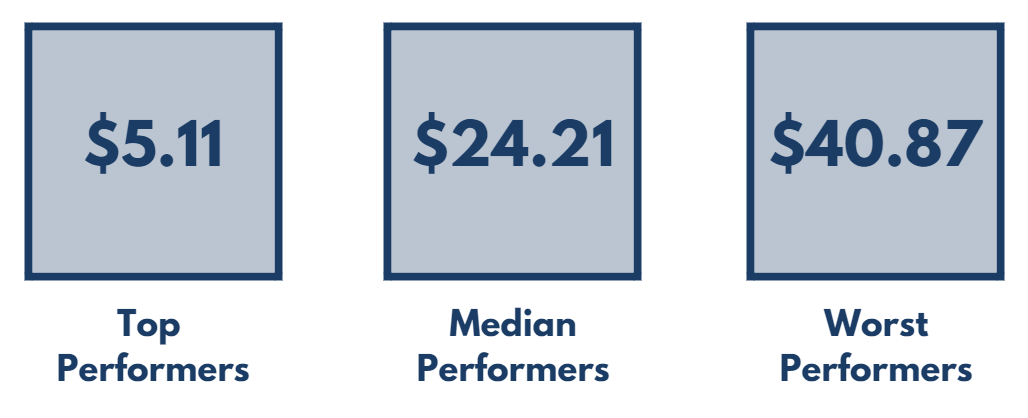How Does Your Sales Order Processing Procedure Measure Up?
Every company has its own approach to sales order processing. Some start working on sales orders the second they come in. Others collect and distribute orders in batches once or twice per day. Those orders can then be routed electronically from one department to the next, or they can be moved through manually. So: how does your sales order processing procedure measure up?
Order Processing Metrics
According to the American Productivity & Quality Center (APQC), the average company spends $24.21 to process a sales order.

Often, a company’s order processing costs go hand-in-hand with their order processing methods. Companies that process each order by hand spend more; companies that use automation spend less. The APQC estimates that a company that spends $21 to process an order the traditional way could spend just $6 with the help of automation.
Then there’s the issue of time. Many orders take days – if not a week or more – to fully process. That’s not too surprising when you think about how many people are involved. (Think customer service reps, credit managers, packers, shippers, and accounts receivable clerks.) Each person plays a crucial role, but projects often get held up going from one department to the next and lead time increases.
Signs You Need to Improve Your Order Processing Workflow
If you’re thinking about making changes to your order processing procedures, take a look at your metrics in the following areas:
- Average Time to Order Entry. How much time passes from the moment an order is received to the time it’s entered into your ERP’s order management system? (You can also look at this metric for each of your individual order channels: phone, email, mail, and fax.)
- Average Time to Order Fulfillment (Lead Time).How long does the entire order fulfillment process take? (This includes approving the order internally, confirming the financial details, collecting and shipping the items, and sending the customer an invoice.)
- Order Entry Error Percentage.. What percentage of your orders get delayed by an error entry mistake (such as an incorrect billing address or price)?
- Lost and Misplaced Order Percentage..What percentage of your orders get delayed by the order being lost or misplaced prior to it being approved?
Your percentage of returning customers is worth considering as well. While many things – not just order processing performance – influence repeat business, this metric can help you determine how well you’re meeting your customers’ expectations. If they receive their orders quickly (and correctly), they’re more likely to come back.
What Can You Achieve With a Better Sales Order Processing Procedure?
Let’s go back to the cost example above: $21 to process a sales order the traditional way, and $6 to process a sales order with the help of automation. That savings of $15 per sales order translates to $15,000 in savings for every 1,000 orders processed. For a company that processes 1,000 orders a month, that’s $180,000 a year – just through lower processing costs. And, when your customer service reps aren’t wasting time on manual data entry, they can focus on projects that actually add to your bottom line.
Improve Your Sales Order Processes With IntelliChief
If you’re ready to start working more efficiently, IntelliChief is here to help. Our sales order entry automation software can:
- Automatically convert purchase orders into sales orders (no manual data entry needed)
- Validate purchase order details
- Eliminate the errors from manual data entry of orders into your ERP system
- Manage the order approval process to streamline processing of orders
- Instantly route documents from one department to the next (e.g., from customer service to credit or engineering)
- Centralize all documents and processes related to an order for easy access from your ERP







